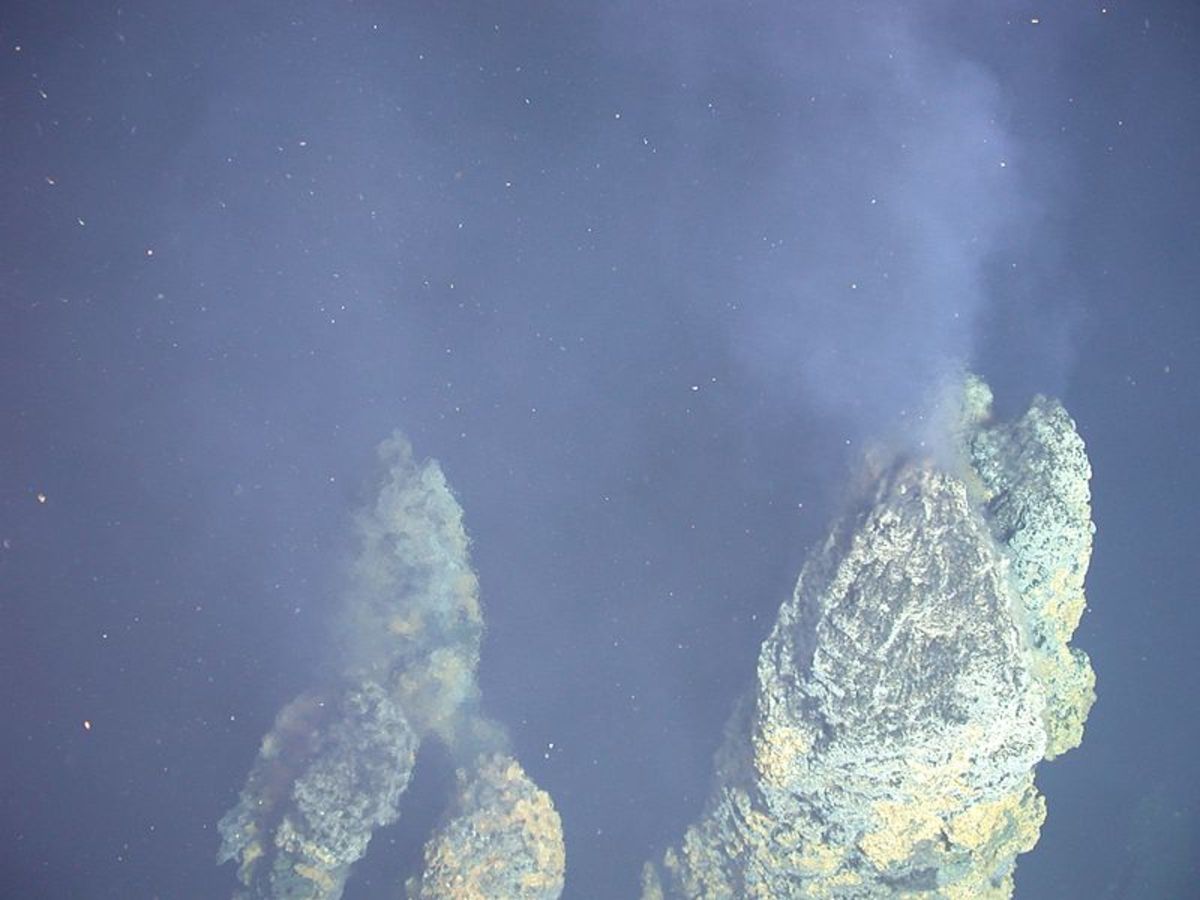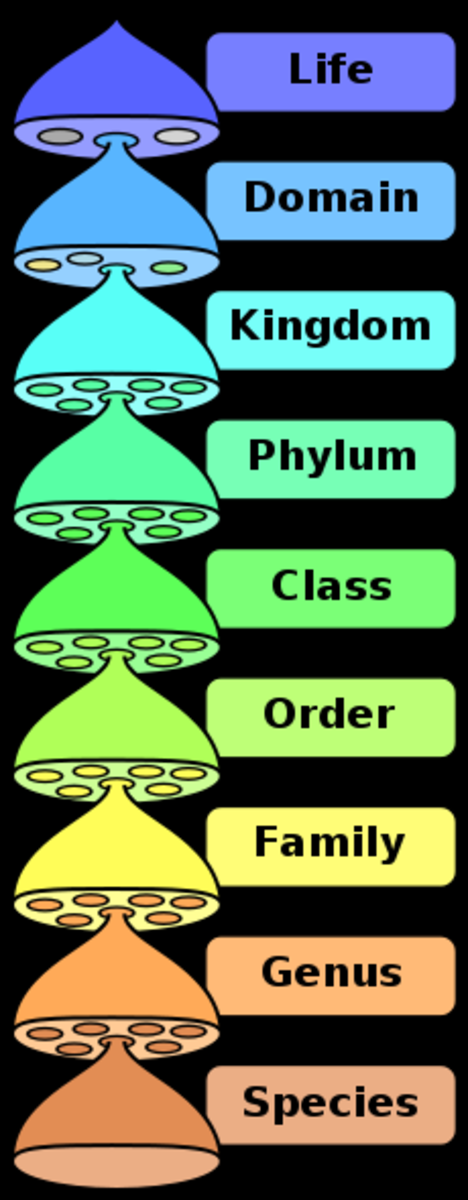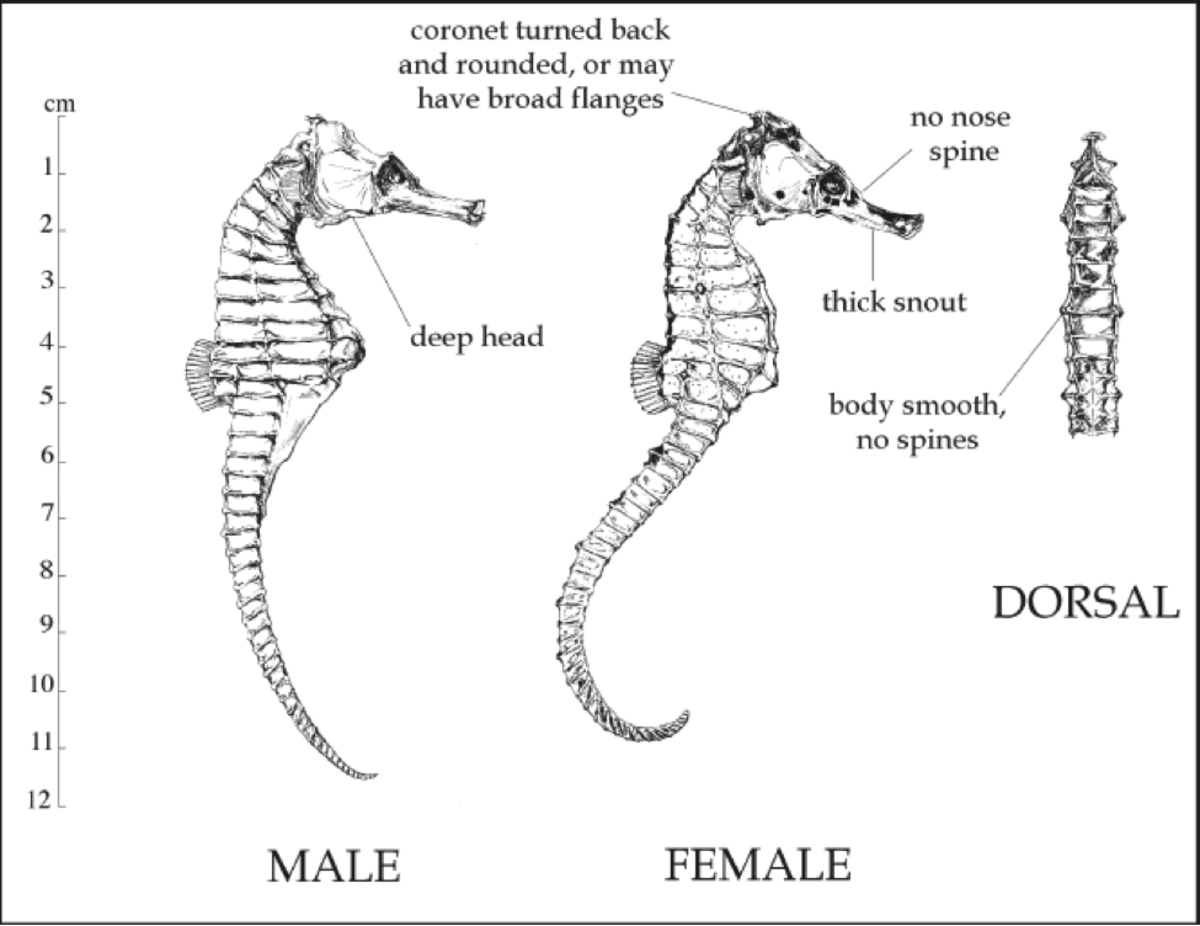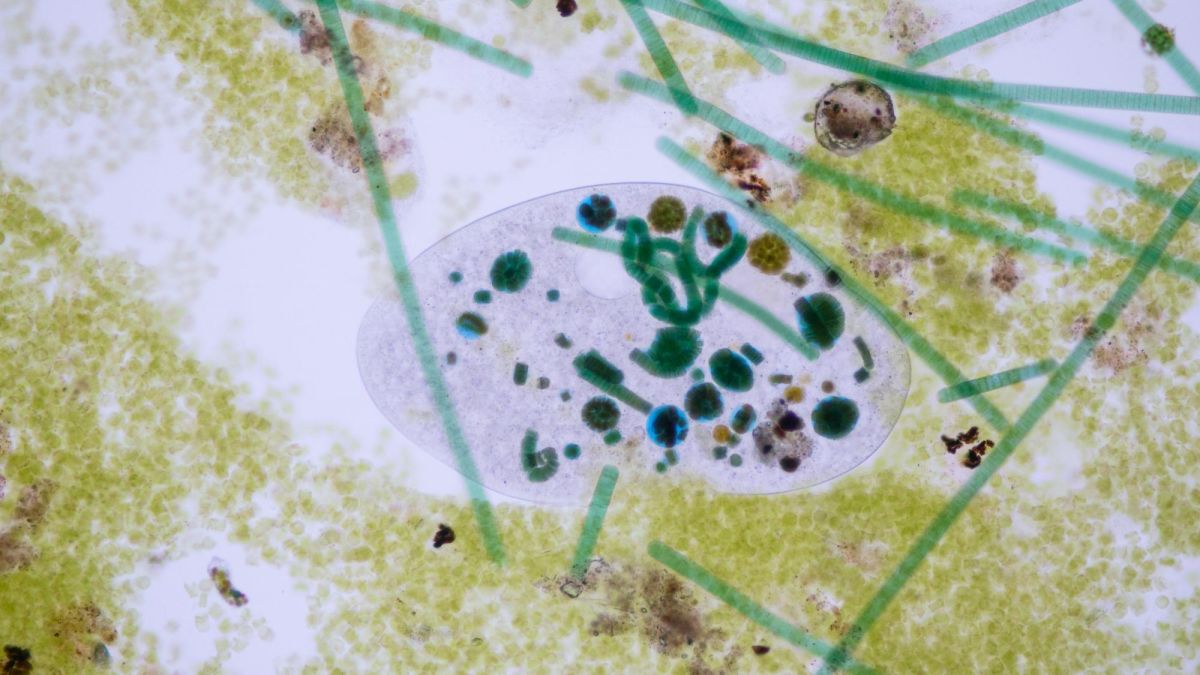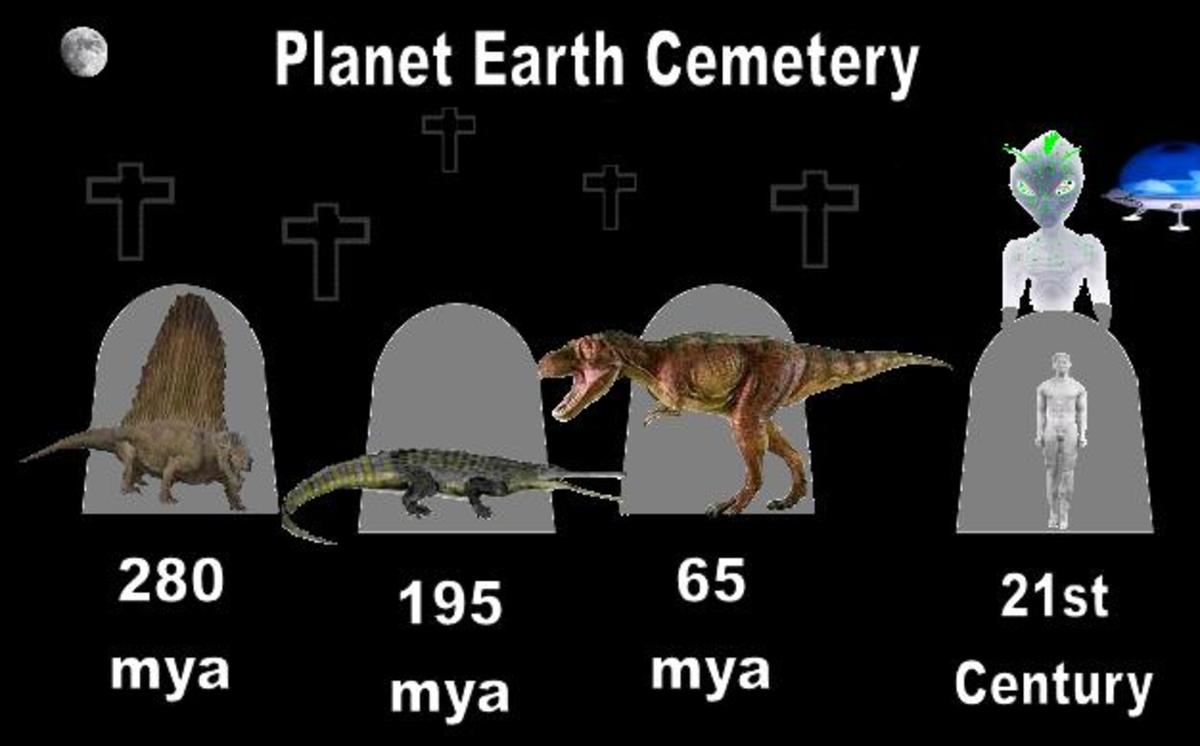The Biology of Hydrothermal Vent Ecosystems
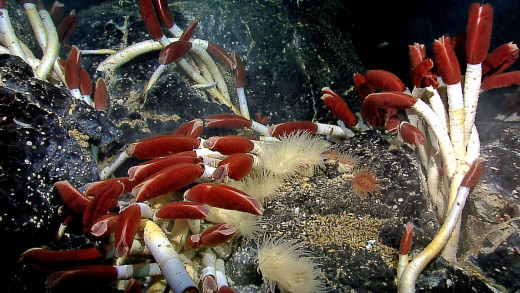
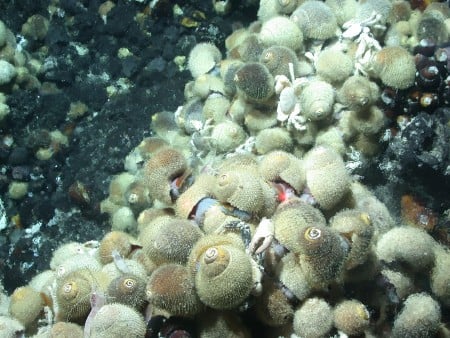
Hydrothermal vents support some of the most productive and densely populated marine biological communities on the planet, but species diversity is low when compared to non-chemosynthetic-based benthic communities (Ramirez-Llodra et el 2007, Glowka 2003). Most hydrothermal ecosystems are comprised of a small number of large organisms that rely mostly on symbioses with chemoautotrophic bacteria for energy, and a larger group of small heterotrophs that are primarily carnivorous, detritivorous or suspension-feeding (Bachraty et el 2009). The most specious taxon of organisms capable of living in the hydrothermal environment is Arthropoda , and these animals make up a high percentage of the total vent biomass (Ramirez-Llodra et el 2007). Invertebrate species thriving at hydrothermal sites include limpets, barnacles, vestimentiferan tubeworms, bivalve mollusks, provannid gastropods and bresiliid shrimp (Van Dover et el 2002).
From an evolutionary standpoint, dominant vent taxa (vestimentiferan tubeworms, bathymodiolid mussles, vesicomyid clams and bressiilid shrimp) are relatively young. Molecular clock data shows that most vent fauna evolved to its current state less than 100 million years ago during the late Cretaceous and Cenozoic (Bachraty et el 2009, Van Dover et el 2002). Current research suggests that many neighboring vent sites have organisms that are genetically connected, which indicates interbreeding between metapopulations. This provides a degree of resilience (at the species level) to events that affect individual vent sites (Devey et el 2007). However, patchy distributions along spreading centers can cause the isolation of groups of species and allopatric speciation has been an important factor in differentiating hydrothermal vent provinces (Bachraty et el 2009, Van Dover et el 2002).
Most vent invertebrates colonize suitable habitats as larvae dispersed by deep sea currents, and are characterized by rapid rates of both population growth and colonization. (Van Dover et el 2002). Hydrothermal vent fauna have evolved to enhance colonization in a variety of ways. Some mussel species remove sulfide from the vent effluent and act as diffusing agents, dispersing vent fluids laterally for several meters, increasing the area of available habitat (Van Dover & Lutz 2004). The average distance of dispersal for the larva of most vent species is 35 to 55 km over a time period of two weeks. The larva of some polychaeats go into developmental arrest in cold water, extending both longevity and dispersal distance (Van Dover et el 2002).
The extreme conditions characteristic of hydrothermal vents has led to high instances of endemism. Approximately 85 percent of known vent species are endemic (Ramirez-Llodra et el 2007). High taxonomic levels of endemicity suggests the evolutionary origin of certain vent species could date back as late as the Paleozoic (Van Dover et el 2002). Both endemic and non-native species have made morphological, physiological and ecological adaptations to adjust to the hydrothermal environment. Many animals have complex combinations of metal detoxification systems that allow them to survive (Gonzales-Rey et el 2008). Others, such as gastropods Alviniconcha sp . and Infremeria nautilei, have an anatomical stomach volume that is 1/10 that of other provannid gastropods, as well as hypertrophied gills that enhance oxygen uptake. Larger gill area also provides more room for endosymbionts which usually live in the epithelial gill tissue of mollusk species (Henry et el 2008). Certain tubeworms, such as R. pachyptila , have physiologies that allow their bodies to span the anoxic and aerobic zones of vent areas. These areas can also differ significantly in temperature. Some worms have adapted to live with one end of their body in water 50 C cooler than the other (Fisher et el 2007, Phillips 2006).
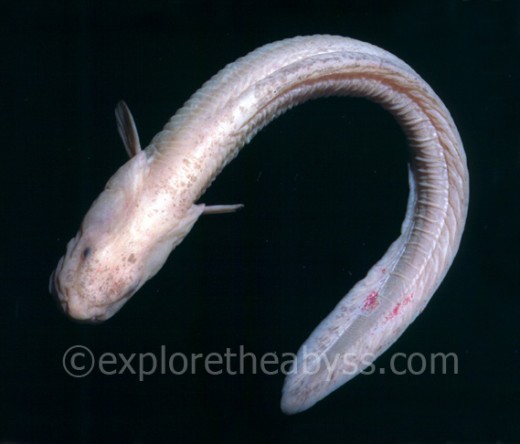
Species Case Study: Thermarces cerberus
There are significantly more invertebrate species inhabiting hydrothermal ecosystems than vertebrate, partially due to the slower rate of genetic evolution and adaptation associated with higher taxonomic groups. The zoarcid fish Thermarces cerberus is one of the few vertebrate species endemic to vent environments and can be found in areas near the East Pacific Rise. T. cerberus feeds on mollusks and crustaceans that are thought to synthesize essential fatty acids necessary to all vertebrate diets in situ. These fatty acids are usually produced by photosynthetic microplankton in the photic zone of the ocean and do not typically reach the benthos of the deep sea, suggesting that T. cerberus is obtaining them from a source in the hydrothermal environment. Sulfur-oxidizing bacterial symbionts of vent species are not known to produce large polyunsaturated fatty acid molecules, which indicates the invertebrates may have evolved biochemical mechanisms once thought exclusive to photosynthetic organisms (Pond et el 2008).
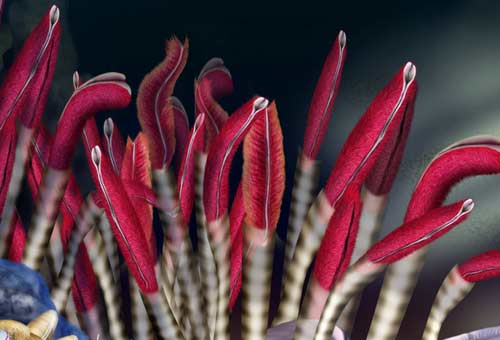
Species Case Study: Riftia pachyptila
Spanning as long as six feet, R. pachyptila is one of the most prominent and widely recognized members of the hydrothermal community. The tubeworm depends on its intracellular chemoautotrophic symbionts for 100 percent of its nutritional needs, and has adapted specific traits to enhance the efficiency of this relationship. R. pachyptila does not have a mouth, gut or anus. Instead it has developed a large internal organ, the trophosome, where it houses its symbionts. These chemoautotrophs generate organic carbon molecules for the worm to feed upon. Through its plume, R. pachyptila absorbs carbon dioxide, hydrogen sulfide and oxygen from the surrounding environment. The tubeworm has developed a unique hemoglobin that binds reversibly to both oxygen and hydrogen sulfide, the substrates needed by the symbionts to generate energy molecules the worm is capable of utilizing. Remarkably, this unique species has also developed a resistance to toxic effects normally observed when hydrogen sulfide is transported through blood and tissue (Fisher & Girguis 2007, Fisher et el 2007, Ramirez-Llodra 2007, Phillips 2006).
Thanks for Reading! Literature Consulted:
Bachraty, C., P. Legendre and D. Desbruyeres. “Biogeographic Relationships Among Deep-Sea Hydrothermal Vent Fauna at Global Scale.” Deep Sea Research. 56 (2009): 1371-1378.
Devey, C., C. Fisher and S. Scott. “Responsible Science at Hydrothermal Vents.” Oceanography. 20.1 (2007): 162-171.
Fisher, C. and P. Girguis. “A Proteomic Snapshot of Life at a Vent.” Science. 315 (2007): 198-199.
Fisher, C., K. Takai, and N. Le Bris. “Hydrothermal Vent Ecosystems.” Oceanography. 20.1 (2007): 14-23.
Glowka, L. “Putting Marine Scientific Research on a Sustainable Footing at Hydrothermal Vents.” Marine Policy. 27.4 (2003): 303-312.
Gonzalez-Rey, M., A. Serafim, R. Company, T. Gomes and M. Bebianno. “Detoxification Mechanisms in Shrimp: Comparative Approach Between Hydrothermal Vent Fields and Estuarine Environments.” Marine Environmental Research. 66 (2008): 35-37.
Henry, M., J. Childress and D. Figueroa. “Metabolic Rates and Thermal Tolerances of Chemoautotrophic Symbioses from Lau Basin Hydrothermal Vent Sites and their Implications for Species Distributions.” Deep Sea Research I. 55 (2008): 679-695.
Phillips, M. “Interdomain Interactions: Dissecting Animal-Bacterial Symbioses.” Bioscience. 56.5 (2006): 376-381.
Pond, D., A. Fallick, C. Stevens, D. Morrison, and D. Dixon. “Vertebrate Nutrition in a Deep-Sea Hydrothermal Vent Ecosystem: Fatty Acid and Stable Isotope Evidence.” Deep Sea Research. 55 (2008): 1718- 1726.
Ramirez-Llodra, E., T. Shank and C. German. “Biodiversity and Biogeography of Hydrothermal Vent Species.” Oceanography. 20.1 (2007): 30-41.
Van Dover, C. and R. Lutz. “Experimental Ecology at Deep-Sea Hydrothermal Vents: A Perspective.” Journal of Experimental Marine Biology and Ecology. 300 (2004): 273-307.
Van Dover, C., C. German, K. Speer, L. Parson, and R. Vrijenhoek. “Evolution and Biogeography of Deep-Sea Methane Vent and Seep Invertebrates.” Science. 295 (2002): 1253-1257.


